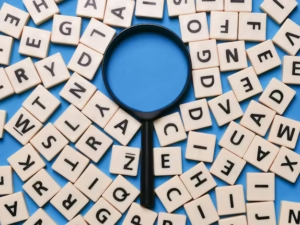
Being Authentic WhatUTalkingBoutWillis
Introduction
Being Authentic WhatUTalkingBoutWillis In an era dominated by curated feeds, filtered selfies, and performative content, the idea of Being Authentic WhatUTalkingBoutWillis often feels like a lost art. Everywhere you scroll, it’s easy to question what’s real and what’s staged. That’s where the phrase Being Authentic WhatUTalkingBoutWillis comes into play—a quirky yet powerful cultural reminder to question the norm and challenge superficiality. Originally a catchphrase from the 1980s sitcom Diff’rent Strokes, it’s now a meme often used to express skepticism or call out falsehoods. But when repurposed in the context of authenticity, it becomes a powerful nudge to reevaluate how genuine we’re being in our online and offline lives.
Being Authentic WhatUTalkingBoutWillis isn’t just about telling the truth; it’s about embracing your values, personality, and imperfections without the need for constant validation. In a digital world flooded with influencers and personal brands, the pressure to “perform” rather than “be” can be overwhelming. This article dives deep into what authenticity truly means today, how it intersects with pop culture, and why leaning into your real self matters now more than ever. Whether you’re a creator, entrepreneur, or just someone trying to live more truthfully, this guide will give you the tools and inspiration to reclaim your voice.
Understanding Authenticity in the Age of Social Media
Authenticity in the digital age is more than just a buzzword—it’s a survival skill. With social media shaping modern communication, our sense of self is constantly being filtered through likes, comments, and engagement metrics. The average user curates a version of themselves they think others will accept or admire. This pressure makes it easy to mistake approval for authenticity, but they are not the same. Being Authentic WhatUTalkingBoutWillis means representing who you truly are, not who the algorithm wants you to be.
The issue is compounded by the fear of missing out (FOMO) and the relentless comparison trap. Everyone seems happier, more successful, and better-looking online. This creates a distorted sense of reality that encourages people to mold themselves into inauthentic personas just to fit in. But what’s lost in that process is genuine connection. When you’re not honest about who you are, the relationships you form—whether personal or professional—are built on shaky ground.
Authenticity invites vulnerability, but that vulnerability is what humanizes us. It’s the unpolished edges, the awkward laughs, and the unscripted moments that make someone relatable. Rather than seeing authenticity as a risk, it should be embraced as a strength—one that builds long-term trust and emotional resonance in a world that often feels manufactured.
The Cultural Impact of Being Authentic WhatUTalkingBoutWillis
Being Authentic WhatUTalkingBoutWillis as an innocent punchline from Gary Coleman’s character in Diff’rent Strokes, but over time, it’s evolved into a popular meme that questions absurdity and falsehood. Its cultural staying power reflects something much deeper—a collective desire to challenge the status quo. In the context of authenticity, this phrase embodies the instinct to call out pretense and demand truth.
Humor and pop culture references have long served as powerful tools for authentic expression. Whether it’s through a viral meme or a clever quote, people often express genuine feelings by aligning with cultural symbols they relate to. Being Authentic WhatUTalkingBoutWillis becomes more than just a meme—it becomes a statement. It’s like saying, “Wait, that doesn’t feel real. Let’s talk about what’s actually going on.”
This playful skepticism encourages introspection. Are we being real, or are we just performing? Are we creating content for connection or for clout? The power of cultural references lies in their ability to bridge gaps and spark deeper conversations. They can cut through the noise, reveal hidden truths, and create space for more meaningful engagement.
In short, embracing pop culture as part of your authentic self is not superficial—it’s human. It gives flavor to your personality and helps others see who you are beneath the surface. Just remember: authenticity doesn’t mean having all the answers—it means being honest about the questions.
Why Being Authentic WhatUTalkingBoutWillis Builds Trust and Connection
In both personal relationships and public platforms, authenticity is the secret ingredient that fosters trust. When people feel you’re being real with them, they respond with loyalty and engagement. This holds especially true in influencer culture, where followers crave connection over perfection. Studies have shown that audiences are more likely to trust and support content creators who share relatable struggles and honest perspectives, rather than just highlight reels.
Authenticity allows others to see themselves in you. When you talk about real experiences—failures, insecurities, messy behind-the-scenes moments—you open the door for empathy. This doesn’t mean you have to spill every detail of your private life. It simply means showing up without a mask, especially when doing so could help someone else feel seen.
Moreover, authenticity is contagious. When one person has the courage to be real, others feel empowered to do the same. Whether you’re leading a team, growing a brand, or building friendships, your willingness to be honest sets the tone. It signals that you’re not playing a role—you’re building something meaningful.
In a digital world where so many connections feel transactional or surface-level, authenticity can be a differentiator. It helps you stand out not by shouting the loudest, but by speaking the truth—even if your voice shakes.
How to Be Authentically You—Without Oversharing
Being Authentic WhatUTalkingBoutWillis doesn’t require you to put every aspect of your life on display. In fact, there’s a difference between being open and oversharing. Authenticity is about intention. It’s choosing to share what aligns with your values and story, not what grabs the most attention. The goal is to be transparent, not performative.
Start by identifying your core values—what really matters to you? Whether it’s creativity, kindness, resilience, or honesty, your content and interactions should reflect those principles. Speak from experience, share lessons you’ve learned, and use your voice in a way that feels natural, not scripted.
It’s also important to set boundaries. You’re allowed to keep some things private. Just because others are broadcasting every detail of their lives doesn’t mean you have to. In fact, part of Being Authentic WhatUTalkingBoutWillis is knowing when to say, “That’s not for public consumption.” It’s okay to be real without being raw.
Finally, don’t try to copy someone else’s version of “real.” What’s authentic for one person may feel forced for another. Your quirks, your tone, your humor—that’s what makes you you. Embrace it. Share content that makes you proud, and speak from a place of truth. That’s where the magic happens.
Conclusion
In a world full of filters and fabricated perfection, Being Authentic WhatUTalkingBoutWillis is a revolutionary act. Being Authentic WhatUTalkingBoutWillisf may have started as a punchline, but today, it challenges us to question the fake and embrace the real. Being true to yourself—online and off—takes courage, but it also builds deeper trust, stronger relationships, and more meaningful impact.
Authenticity isn’t about being loud. It’s about being aligned. It’s about showing up consistently, honestly, and unapologetically—even if it means being misunderstood sometimes. So go ahead—be that person who asks the uncomfortable questions, who shares the honest story, who lives from the heart. The world needs more of you, not a version you think they want.
Also Read: financeville craigscottcapital






